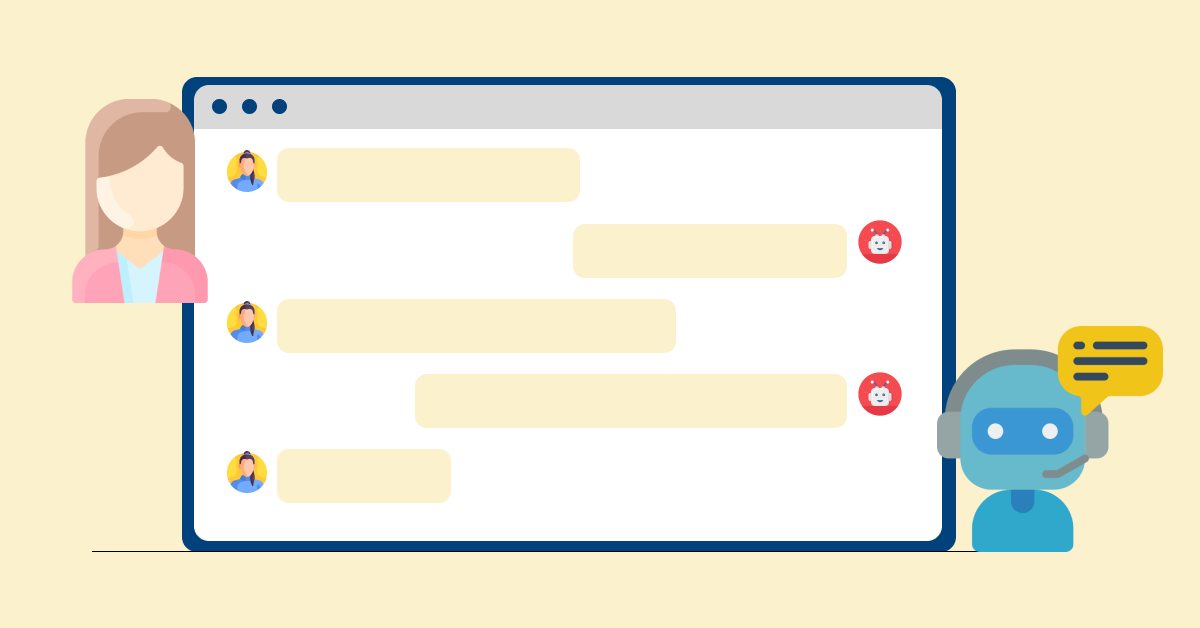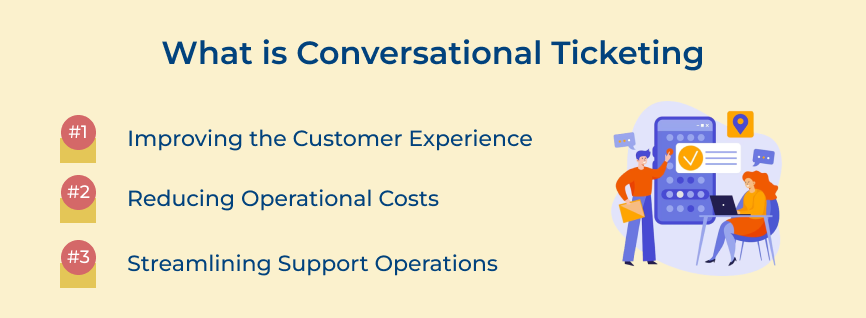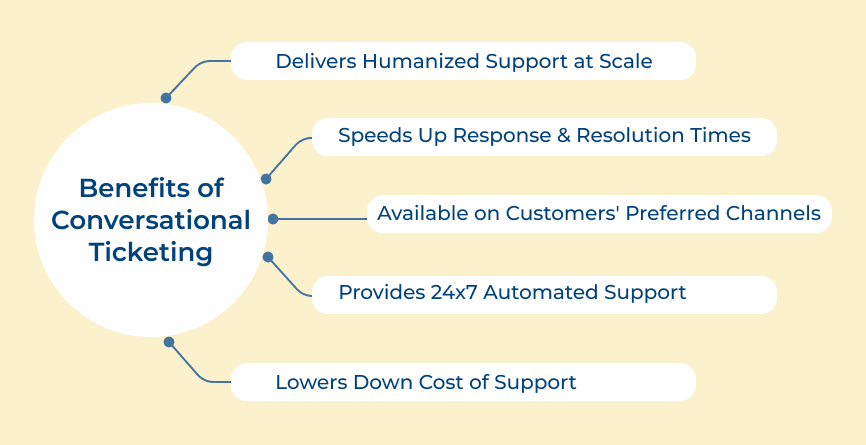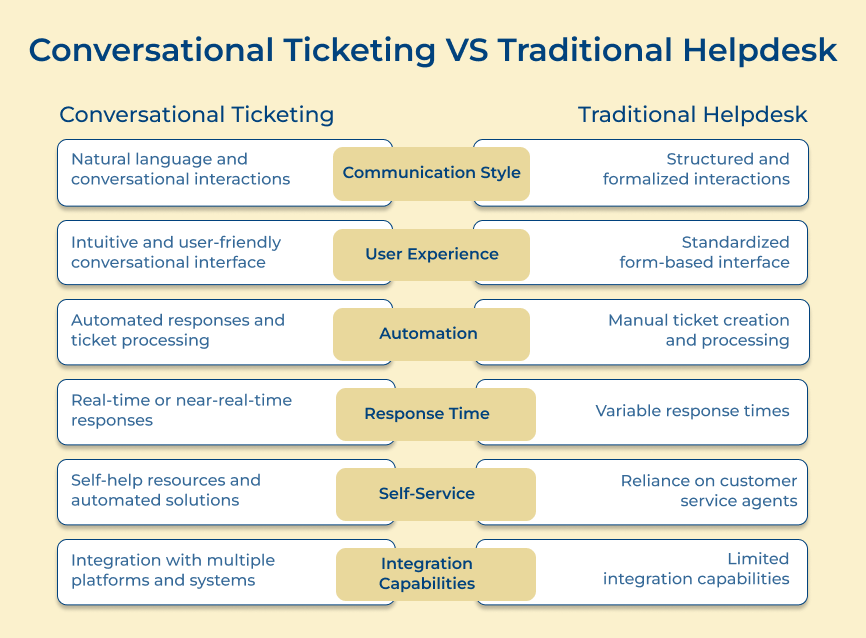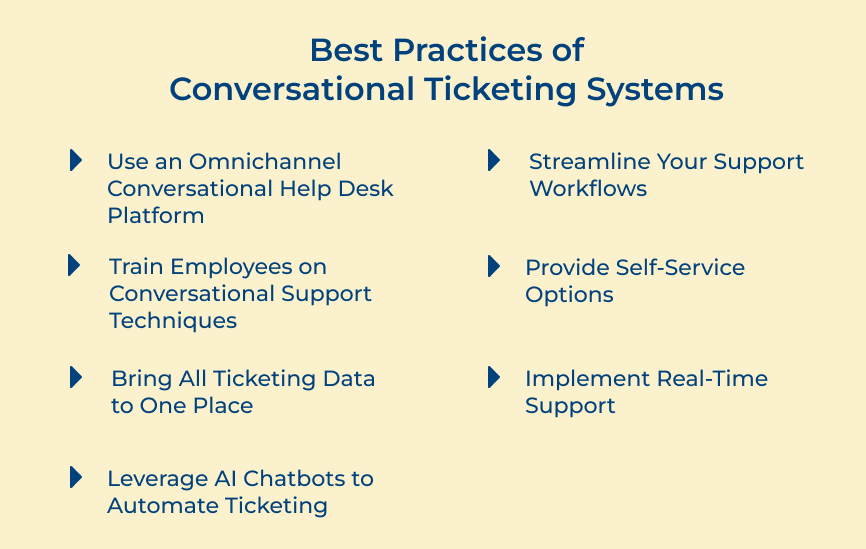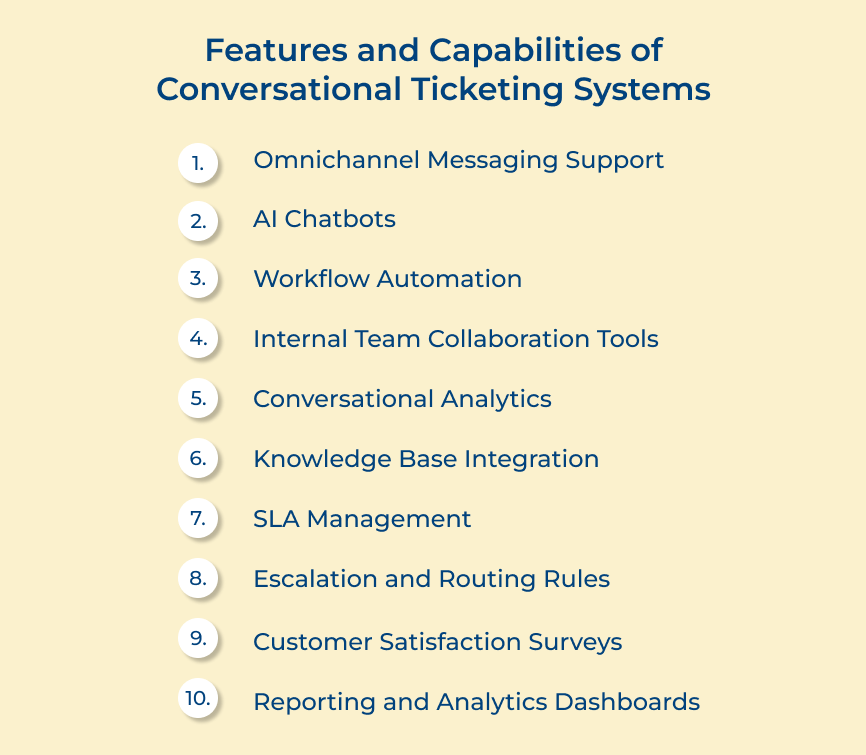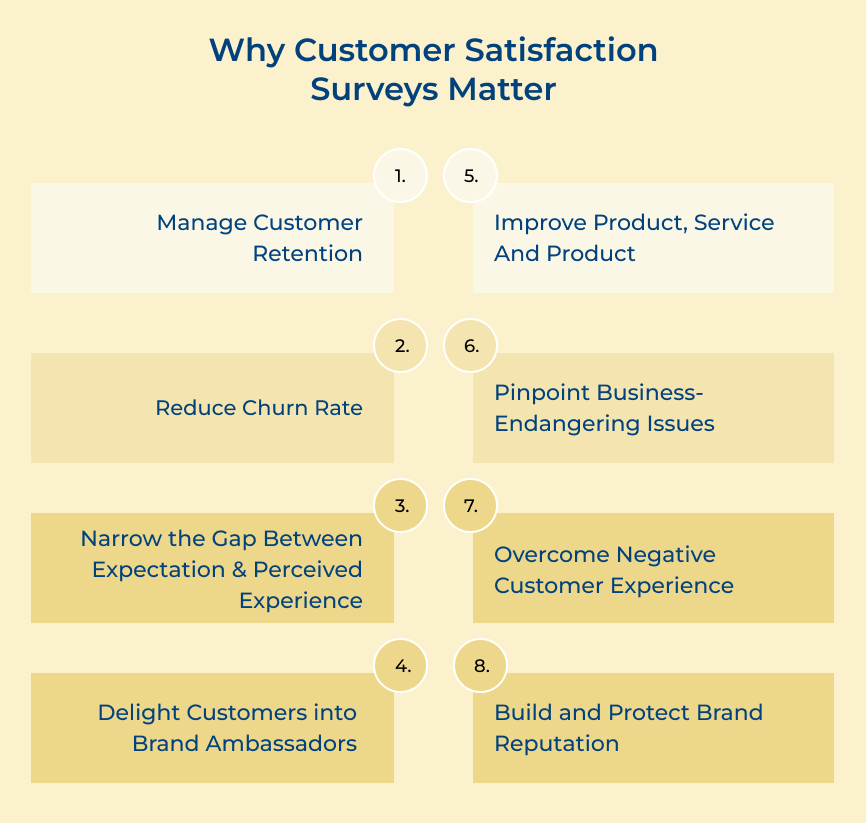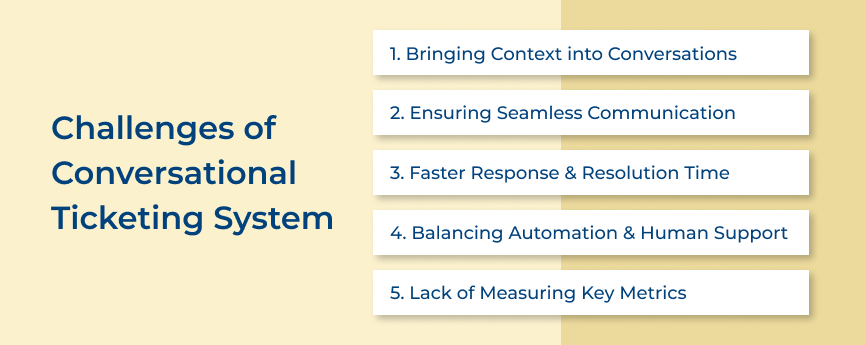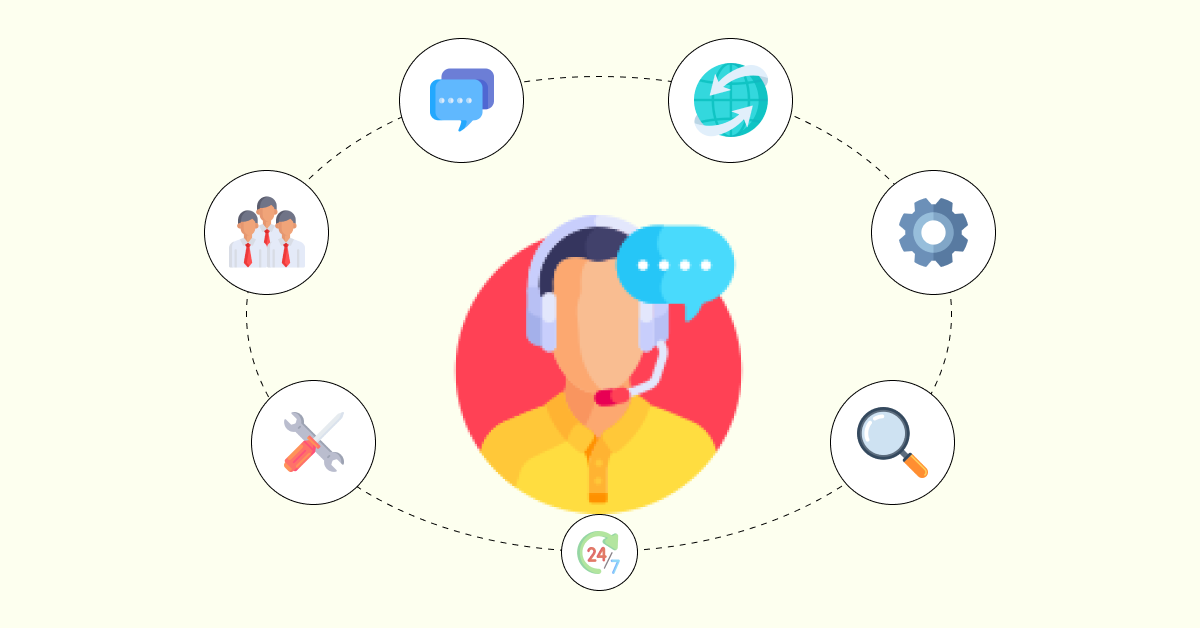-
Use an Omnichannel Conversational Help Desk Platform
Such a platform is necessary for businesses that want to provide a seamless customer experience across all communication channels. With so many communication channels available, it can be overwhelming for support teams to manage incoming requests.
An omnichannel help desk platform solves the issue by aggregating all customer requests into one central location, be it through email ticketing, online ticketing, or business chat platforms. It allows support teams to provide real-time support and faster resolution times, leading to higher satisfaction ratings.
Best practices:
1. Ensure the platform seamlessly integrates with all communication channels.
2. Regularly analyze important metrics such as response and resolution times to ensure customer satisfaction.
3. Provide robust training and support for employees to ensure proficiency in the new system.
-
Provide Self-service Options
The systems greatly benefit from their ability to offer self-service options to customers. It not only saves time for support agents but also empowers customers to find answers quickly and effortlessly. There are various ways to implement self-service options effectively.
The initial step involves building a comprehensive knowledge base that addresses frequently asked questions and common issues. It can be integrated with the conversational ticketing system so customers can easily search for answers and find resolutions on their own.
Best practices:
1. Regularly update the knowledge base with the latest information to ensure customers can access accurate information.
2. Make the self-service options easy to find and navigate by including clear descriptions of the available resources.
3. Train support agents and virtual assistants to recognize when a customer inquiry can be resolved through self-service options.
-
Implement Real-Time Support
Real-time support is a critical aspect of ticketing systems. With today’s customers expecting quick resolutions to their issues, providing real-time support can help businesses meet and exceed customer expectations.
Implementing real-time support begins with choosing a platform to handle incoming requests efficiently. The proactive approach ensures that customers receive immediate assistance, promoting a sense of urgency and attentiveness that can significantly impact their overall experience.
Best practices:
1. Set clear expectations with customers about when and how they can expect to receive real-time support.
2. Ensure that customer service agents are adequately trained to respond promptly to incoming requests.
3. Leverage automated tools such as chatbots and virtual assistants to deliver instant support without relying on human involvement.
-
Leveraging AI Chatbots to Automate Ticketing
Using artificial intelligence (AI) chatbots to automate ticketing systems is proving to be a game-changer. More than 95% of customer interactions will be taken over by AI. With AI chatbots, businesses can handle repetitive tickets without human intervention. It improves efficiency and frees up customer service agents for tasks that require a more personal touch.
Implementing AI chatbots is relatively easy and starts with selecting a ticketing solution that offers chatbot functionality. Once in place, businesses can train the chatbot to handle common customer requests and issues, such as billing inquiries or technical problems. Customers can resolve their issues faster without waiting for a human agent to respond.
Best practices:
1. Train the chatbot to handle simple requests before moving on to more complex ones.
2. Regularly check the chatbot’s performance and adjust its training to ensure it’s handling requests correctly.
3. Let customers know when interacting with a chatbot. It sets expectations and allows them to escalate to a human agent.
-
Streamline Your Support Workflows
Effective support workflows are essential for businesses to resolve incoming requests while maintaining customer satisfaction(CX) efficiently. Establishing streamlined support workflows helps businesses improve resolution rates, reduce costs and increase overall productivity.
Implementing streamlined support workflows requires a strategic approach. The first step is identifying the most common customer requests and issues to create a support process that addresses them systematically. Assigning clear roles to the support team and ensuring that communication channels are streamlined is crucial.
Best practices:
1. Establish standard operating procedures to ensure support agents follow a consistent process when dealing with customer requests.
2. Use the right ticketing solutions to help agents easily manage and prioritize incoming requests. Automated systems such as conversational ticketing can help to improve response times.
3. Monitoring the performance and feedback of the support team regularly is vital. It enables businesses to evaluate the quality of service provided.
-
Train Employees on Conversational Support Techniques
Effective communication is a crucial aspect of ticketing, and training employees on conversational support techniques is essential for providing excellent customer service. Consistent and effective communication helps agents build customer rapport and trust.
Implementing conversational support techniques training involves a strategic approach. Businesses have the advantage of providing comprehensive training opportunities to their employees, utilizing a diverse range of methods such as engaging workshops, interactive online courses, and personalized one-on-one coaching sessions.
Best practices:
1. Implement a supportive learning environment where employees feel comfortable asking questions about any challenges faced during training.
2. Role-playing scenarios help employees strengthen their communication skills and improve their confidence in handling challenging customer situations.
3. Companies must provide constant feedback to employees to ensure they succeed. Positive reinforcement can help employees better understand ticketing techniques and improve their customer service skills.
-
Bring All Ticketing Data To One Place
One of the crucial aspects of a conversational ticketing system is having all ticketing data in one place. Bringing all ticketing data into a single platform helps enterprises improve efficiency and reduce operational costs, leading to a faster resolution time.
Implementing the Bring All Ticketing Data in One Place strategy involves consolidating data from various channels, including email ticketing, online ticketing, and business chat platforms like Slack.
Best Practices:
1. Businesses should centralize all ticketing channels in one platform to view all incoming requests comprehensively.
2. Businesses can use ticketing solutions that use AI and machine learning to automate repetitive tickets.
3. Companies should monitor ticket status in real-time. AI tools can help customer service agents track ticket status and provide faster resolution.
Features and Capabilities of Conversational Ticketing Systems
Below are the essential features and capabilities of conversational ticketing systems. Explore how they can elevate your customer service game to new heights and keep your audience engaged.
